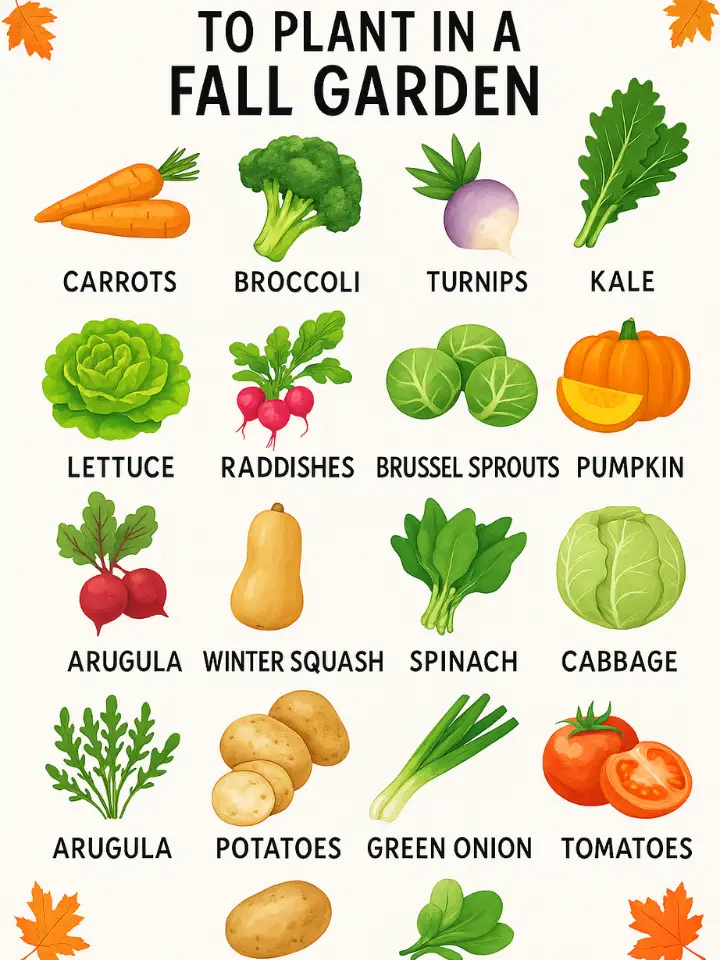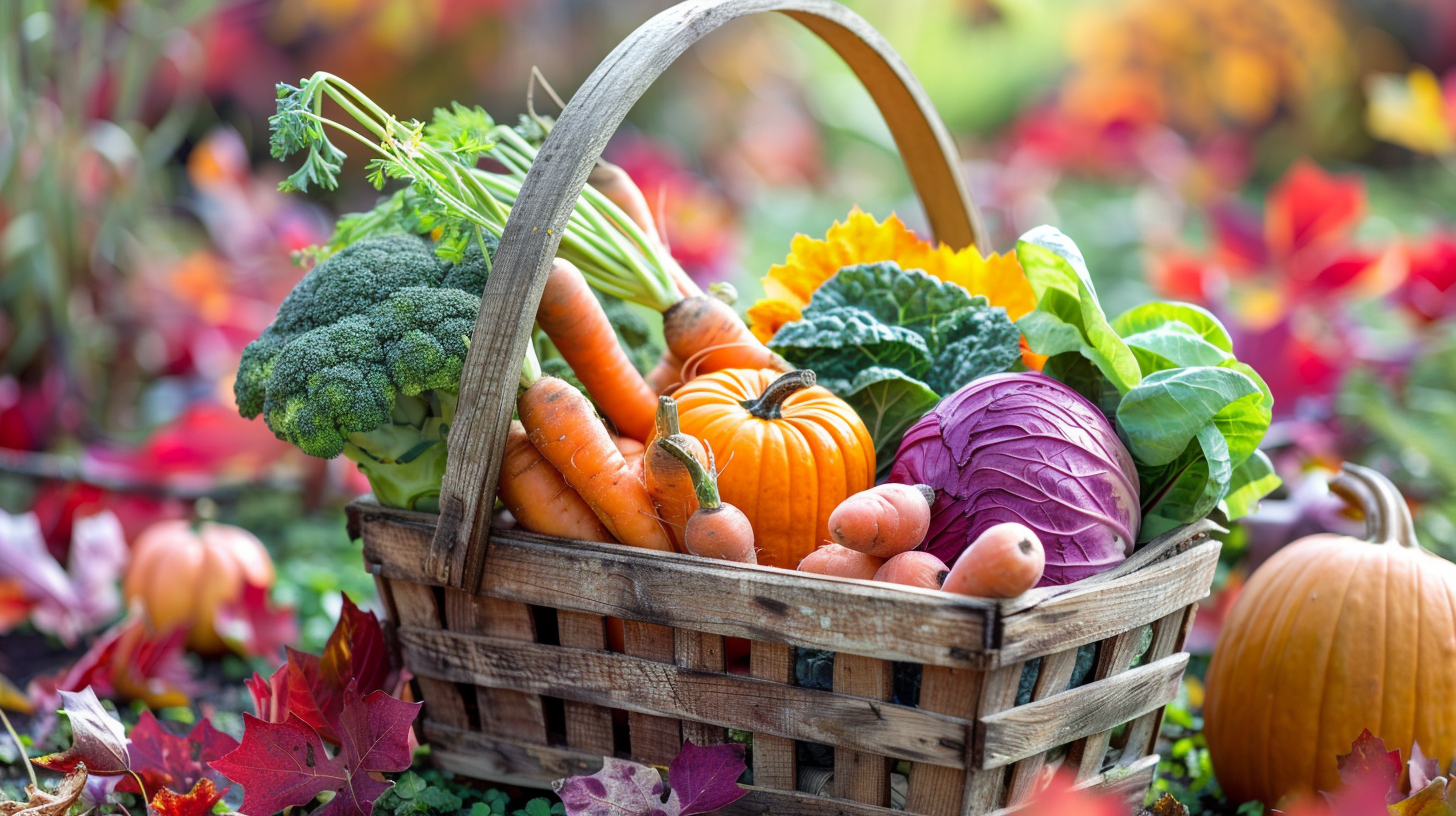Fall Garden Vegetables to Plant: Your Ultimate Guide to a Thriving Autumn Harvest
Introduction: Why Your Garden Doesn’t Have to End with Summer
When the hot days of summer start to fade, many gardeners pack away their tools and assume the season is over. But here’s the truth: your garden can thrive in autumn just as much as it did in spring. The cooler temperatures, the lingering warmth of the soil, and the crispness in the air create the perfect environment for certain vegetables. In fact, some crops taste even better after the first light frost.
If you’ve been wondering which fall garden vegetables to plant for fresh, flavorful meals, you’re in the right place. This guide walks you through the best options, how to plant them, common mistakes to avoid, and even recipes to make the most of your harvest. By the end, you’ll feel confident about extending your gardening season and reaping delicious rewards well into the colder months.
Why Plant Vegetables in Fall?
Planting in fall isn’t just about squeezing in an extra harvest. It’s about working with nature instead of against it. Here’s why fall gardening makes sense for you:
- Cooler weather means less stress on plants. Unlike the scorching heat of summer, fall brings stable conditions.
- Pests are fewer. Many bugs and garden invaders die off or slow down in cooler months.
- Moisture lasts longer. With lower evaporation, your soil retains water better.
- Frost improves flavor. Carrots, kale, and spinach turn sweeter after frost as they convert starches into sugars.
So instead of shutting down your garden, think of fall as your second chance to harvest plenty
The Best Fall Garden Vegetables to Plant
Not every vegetable enjoys the chilly air, but plenty of them thrive in it. Let’s break them down into categories so you know exactly what to grow.
Root Vegetables for Fall
Root crops love the cool soil of autumn. They store well, and their earthy flavors pair perfectly with hearty dishes.
- Carrots – Sweet and crisp, they’re easy to grow in loose soil.
- Beets – Colorful and versatile; you can use both roots and greens.
- Turnips – A classic fall favorite, perfect for soups and roasting.
- Radishes – One of the quickest crops; ready in just 3–4 weeks.
- Potatoes – Plant early enough and you can enjoy a late-season harvest.
Tips for success: Sow directly into the soil, thin seedlings to avoid crowding, and keep the bed weed-free.
Leafy Greens That Love Cool Weather
Greens are ideal for fall gardens because they grow fast and can be harvested continuously.
- Kale – Hardy and resilient, with flavor that improves after frost.
- Lettuce – Perfect for cut-and-come-again harvesting.
- Spinach – Packed with iron, easy to grow, and frost-tolerant.
- Arugula – Peppery leaves that add zest to salads.
- Cabbage – A heavier crop that requires more space but worth it.
Gardener’s tip: Harvest outer leaves first so plants keep producing.
Cruciferous Champions
Members of the cabbage family thrive in cool climates and are rich in nutrients.
- Broccoli – Needs a bit more time but produces multiple harvests.
- Brussels Sprouts – Love the cold; flavor deepens as temperatures drop.
- Cauliflower – Sensitive but rewarding if you give it consistent moisture.
Trick to remember: Start these indoors or buy young plants, then transplant when the weather cools.
Squash and Pumpkins
Although usually thought of as summer crops, some varieties can stretch into fall.
- Pumpkins – Best planted in late summer for autumn harvests.
- Winter squash – Like butternut or acorn, excellent for storage.
Here’s a quick recipe table to inspire you:
| Vegetable | Recipe Idea | Ingredients |
|---|---|---|
| Pumpkin | Creamy Pumpkin Soup | Pumpkin, onion, garlic, broth, cream |
| Butternut Squash | Roasted Squash with Herbs | Squash, olive oil, rosemary, salt |
| Acorn Squash | Stuffed Squash | Acorn squash, quinoa, mushrooms, spinach |
Preparing Your Garden for Fall Vegetables

You can’t just throw seeds into the ground and hope for the best. A little preparation goes a long way.
Soil Preparation
- Add compost to refresh nutrients.
- Test pH levels—most veggies prefer slightly acidic to neutral soil.
- Clear out summer crops and weeds to reduce disease risk.
Planting Techniques
- Direct sowing works best for roots and fast growers like radishes.
- Transplants are better for slow growers like broccoli.
- Raised beds keep soil warmer for longer.
Timing & Frost Protection
- Use your local frost calendar as a guide.
- Plant 6–8 weeks before first frost for best results.
- Protect young plants with row covers or cold frames.
Recipes You Can Make with Fall Garden Vegetables
Your garden doesn’t just give you produce—it gives you inspiration in the kitchen. Here are some simple recipes to try with your harvest:
Comfort Soups
- Carrot Ginger Soup – Carrots, ginger, onion, broth.
- Beet Soup (Borscht) – Beets, cabbage, dill, sour cream.
- Potato Kale Stew – Potatoes, kale, garlic, vegetable broth.
Fresh Salads
- Spinach and arugula with roasted pumpkin seeds.
- Cabbage slaw with radishes and carrots.
Oven-Roasted Dishes
- Root vegetable medley with rosemary.
- Brussels sprouts glazed with balsamic.
(Insert tables for 2–3 recipes with clear ingredients for easy reading.)
Mistakes to Avoid in Fall Gardening
Even experienced gardeners slip up in autumn. Here are the common pitfalls to watch out for:
- Planting too late so crops don’t mature before frost.
- Overwatering when cooler air slows evaporation.
- Forgetting to mulch, which keeps soil warm.
- Neglecting protection from early frosts.
b Benefits of Fall Gardening
By choosing the right fall garden vegetables to plant, you gain more than just food.
- Health benefits – Fresh, nutrient-rich produce boosts your immunity.
- Economic savings – You spend less at the store.
- Environmental impact – Reduces carbon footprint and packaging waste.
- Emotional wellness – Gardening helps you slow down and enjoy the season.
FAQ About Fall Garden Vegetables to Plant
What vegetables grow best in a fall garden?
Root crops like carrots and beets, leafy greens like kale and spinach, and crucifers such as broccoli and Brussels sprouts are ideal.
Can I grow tomatoes in fall?
Yes, but only in warmer regions or with greenhouse protection.
How late can I plant fall vegetables?
Most should go in 6–8 weeks before your first frost date.
Do fall veggies taste different?
Absolutely. Cold weather sweetens crops like kale and carrots.How do I protect my crops from frost?
Use row covers, cold frames, or even DIY cloches.
Conclusion
You don’t need to say goodbye to your garden when summer ends. By choosing the right fall garden vegetables to plant, preparing your soil, and protecting your crops, you can extend your growing season and fill your kitchen with nourishing meals.
So grab your seeds, roll up your sleeves, and give fall gardening a try. Once you taste a frost-sweetened carrot or a hearty kale stew, you’ll wonder why you didn’t start sooner.


0 Comment